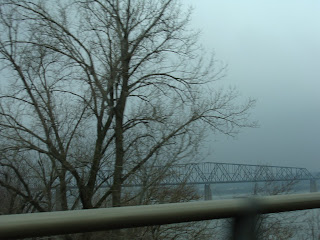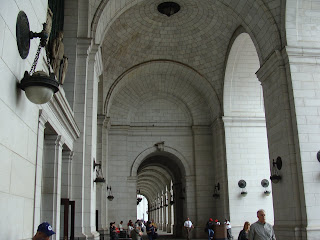So I'm confused, how is the new I-64 better than the old one? All the old curves are still there, the road is still three lanes through the most congested portion around I-170, and traffic is actually worse than it was two years ago. My parents told me they ended up in stopped traffic going westbound on Sunday, and I encountered much, much heavier traffic west and east of the road closure on the same day. I suspect we are seeing what
Robert Moses discovered decades before, and our highway engineers should have expected: you build more lanes, and you get more traffic. Why? Because people see a new interstate, and everyone immediately starts driving on it. Big surprise. And the accordion effect of going for three to four to three and then back to four lanes again compresses and slows down traffic. Driving over Hampton, I could see traffic backing up westbound around Clayton Avenue--the same place it began to back up ten years ago when I was an intern at the Art Museum. When is this collective fog going to lift and everyone realizes that the new interstate, while technically safer, solved none of our traffic woes?
 The second one has not pleased me as well as the first one. It has plopped over in this picture, and shows no signs of blooming. It has since stood back up, but will probably flop over again sometime soon. It has flopped over before and then risen again, so I am not sure what is wrong with it.
The second one has not pleased me as well as the first one. It has plopped over in this picture, and shows no signs of blooming. It has since stood back up, but will probably flop over again sometime soon. It has flopped over before and then risen again, so I am not sure what is wrong with it.

















































